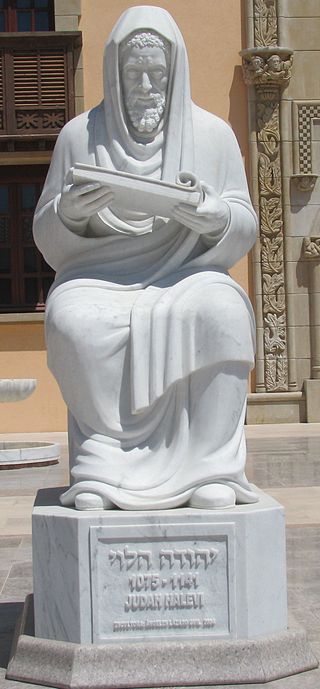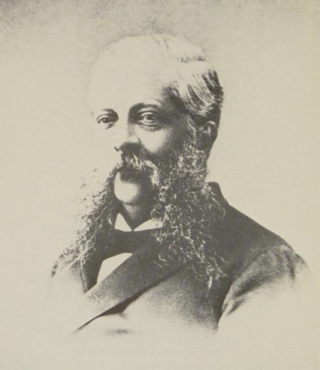Related Research Articles

Unity is a spiritual organization founded by Charles and Myrtle Fillmore in 1889. It grew out of Transcendentalism and became part of the New Thought movement. Unity may be best known for its Daily Word devotional publication begun in 1924. Originally based in Christianity with emphasis on the Bible, Unity has said it is a "Christian movement that emphasizes affirmative prayer and education as a path to spirituality," and says about itself, "We honor all spiritual practices and the diversity of paths leading to enlightenment."

Christian Science is a set of beliefs and practices which are associated with members of the Church of Christ, Scientist. Adherents are commonly known as Christian Scientists or students of Christian Science, and the church is sometimes informally known as the Christian Science church. It was founded in 1879 in New England by Mary Baker Eddy, who wrote the 1875 book Science and Health with Key to the Scriptures, which outlined the theology of Christian Science. The book was originally called Science and Health; the subtitle with a Key to the Scriptures was added in 1883 and later amended to with Key to the Scriptures.

Judah Halevi was a Sephardic Jewish poet, physician and philosopher. He was born in Al-Andalus, either in Toledo or Tudela, in 1075. He is thought to have died in 1141, in either Jerusalem, at that point the Crusader Kingdom of Jerusalem, or in Alexandria, Egypt.
Ernest Shurtleff Holmes was an American New Thought writer, teacher, and leader. He was the founder of a spiritual movement known as Religious Science, part of the greater New Thought movement, whose spiritual philosophy is known as "The Science of Mind." He was the author of The Science of Mind and numerous other metaphysical books, and the founder of Science of Mind magazine, in continuous publication since 1927. His books remain in print, and the principles he taught as "Science of Mind" have inspired and influenced many generations of metaphysical students and teachers. Holmes had previously studied another New Thought teaching, Divine Science, and was an ordained Divine Science Minister. His influence beyond New Thought can be seen in the self-help movement.
Word of Faith is a movement within charismatic Christianity which teaches that Christians can get power and financial prosperity through prayer, and that those who believe in Jesus' death and resurrection have the right to physical health.
The Church of Divine Science is a religious movement within the wider New Thought movement. The group was formalized in San Francisco in the 1880s under Malinda Cramer. "In March 1888 Cramer and her husband Frank chartered the 'Home College of Spiritual Science.” Two months later, Cramer changed the name of her school to the “Home College of Divine Science." After the 1906 San Francisco earthquake and Cramer’s death, the headquarters moved back to Colorado. It established its headquarters in Denver and later moved the base of its operations to Pueblo.
The New Thought movement is a new religious movement that coalesced in the United States in the early 19th century. New Thought was seen by its adherents as succeeding "ancient thought", accumulated wisdom and philosophy from a variety of origins, such as Ancient Greek, Roman, Egyptian, Chinese, Taoist, Hindu, and Buddhist cultures and their related belief systems, primarily regarding the interaction among thought, belief, consciousness in the human mind, and the effects of these within and beyond the human mind. Though no direct line of transmission is traceable, many adherents to New Thought in the 19th and 20th centuries claimed to be direct descendants of those systems.
The International New Thought Alliance (INTA) is an umbrella organization for New Thought adherents "dedicated to serving the New Thought Movement’s various branches, organizations and individuals".

Josephine Emma Curtis Hopkins was an American spiritual teacher and leader. She was involved in organizing the New Thought movement and was a theologian, teacher, writer, feminist, mystic, and healer; who taught and ordained hundreds of people, including notably many women. Hopkins was called the "teacher of teachers" and "mother of New Thought" because a number of her students went on to found their own churches or to become prominent in the New Thought Movement, including Charles and Myrtle Fillmore, founders of Unity Church; Ernest Holmes; and H. Emilie Cady, author of Unity's cornerstone text Lessons in Truth. According to Charles S. Braden, Hopkins influenced the development of New Thought "more than any other single teacher", and modern scholars have identified Hopkins as the founder of New Thought.

Charles Sherlock Fillmore was an American religious leader who founded Unity, a church within the New Thought movement, with his wife, Myrtle Page Fillmore, in 1889. He became known as an American mystic for his contributions to spiritual interpretations of Biblical Scripture. Fillmore promoted vegetarianism for three decades of his life.
Agnes Mary Sanford was an American Christian writer. She is most known for founding the Inner Healing movement, a process she described as the healing of memories.

Harriet Emilie Cady was an American homeopathic physician and author of New Thought spiritual writings. Her 1896 book Lessons in Truth: A Course of Twelve Lessons in Practical Christianity is now considered one of the core texts on Unity Church teachings. It has sold over 1.6 million copies since its first publication.

In Christianity, the figures widely recognised as prophets are those mentioned as such in the Old Testament and the New Testament. It is believed that prophets are chosen and called by the one God.
Annie Rix Militz (1856–1924) was an American author and spiritual leader. An early organizer of the New Thought Movement, she is best known as the founder of Home of Truth. With her sister Harriet Hale Rix, Annie Rix Militz was also a founder of the West Coast Metaphysical Bureau, a group whose aim was to study philosophies and religions.

Horatio Willis Dresser was a New Thought religious leader and author in the United States. In 1919 he became a minister of General Convention of the Church of the New Jerusalem, and served briefly at a Swedenborgian church in Portland, Maine.
The history of New Thought started in the 1830s, with roots in the United States and England. As a spiritual movement with roots in metaphysical beliefs, New Thought has helped guide a variety of social changes throughout the 19th, 20th, and into the 21st centuries. Psychologist and philosopher William James labelled New Thought "the religion of healthy-mindedness" in his study on religion and science, The Varieties of Religious Experience.
Samuel Putnam Bancroft, also known as Samuel P. Bancroft, was an American Christian Scientist and an early student of Mary Baker Eddy.

Charles Cullis was an Episcopalian physician based in Boston, Massachusetts. He became known for his involvement in the Holiness movement.
References
- 1 2 3 4 De Arteaga 2019.
- ↑ Darling 1990, p. 454.
- ↑ Klassen 2011, pp. 111, 144.
- 1 2 Harley 2002, p. 132.
- ↑ Judah 1967, p. 301.
- 1 2 Smith 2017.
- ↑ Klassen 2011, p. 144.
- ↑ Judah 1967, p. 300.